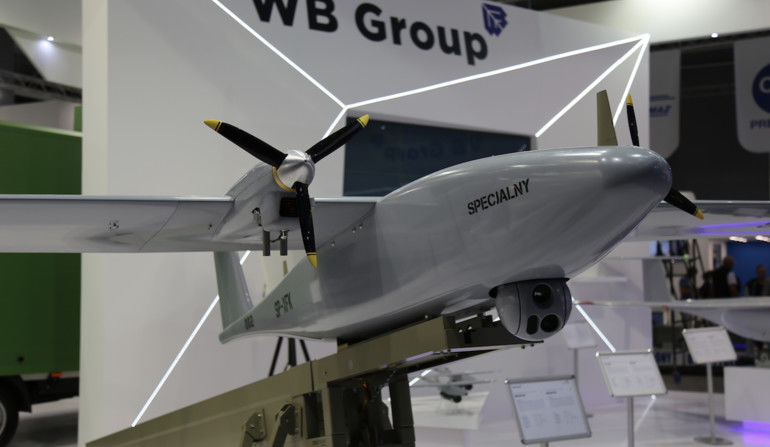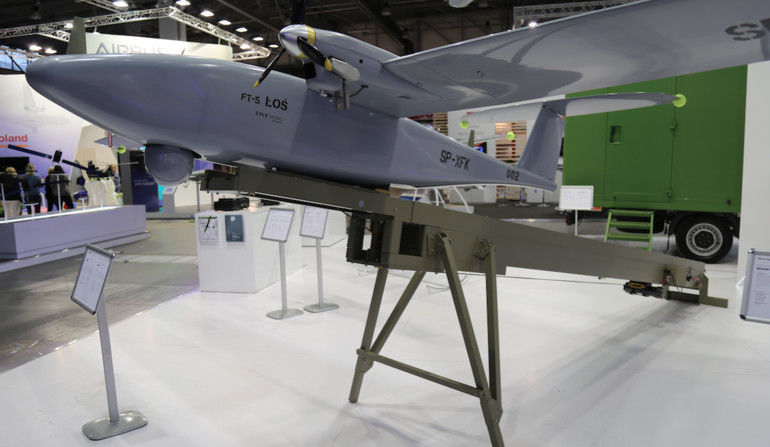Tactical “Łoś” UAV System Designed by WB Group. Armament Carrying Capability
During this year’s edition of the MSPO Kielce defence exhibition, a new “Łoś” UAV has been presented for the first time. The system has been designed by the Polish WB Group company. As we were assured by the representatives of the manufacturer, the twin-engined aircraft has been created in order to meet the expectations and needs of the Polish Armed Forces, within the field of tactical short range UAVs.
Łoś UAV weighs 85 kilograms, its wingspan is 6.4 meters and the fuselage is 3.1 meters long. It is capable of taking off autonomously. This is done with the use of a mobile ramp fitted with a catapult. The UAV in question is also able to land on a special purpose portable mat or in any terrain that may be available. Łoś UAV has no landing gear, however, considering the low approach speed, which happens in a gliding flight, and thanks to the airframe position stabilizing system, as the representatives of the WB Group suggest, no risk exists of damaging the structure of the aircraft during the return portion of its flight. The UAV in question has been fitted with two engines, while ability to fly, should one engine fail, increases the level of safety and reliability.

The UAV’s flight endurance is defined as up to 18 hours. The aircraft has been designed in a way which makes it simple to use the system. The operational range is said to reach up to 180 kilometres. “Łoś” UAV may be fitted with retractable optronic sensors, light COMINT/ELINT systems, the weight of which may reach a couple of kilograms, contamination sensors, as well as armament, in a form of the Sting glide bombs, developed and designed at WB. The aircraft may carry maximum payload of up to 55 kilograms. Nonetheless, increased payload has a detrimental impact on the UAV’s flight endurance.

“Łoś”, besides the army, may also be used by other uniformed services, including the Polish Border Guard which also acquired the WB Group’s FlyEye UAV systems. In the reconnaissance variant, the UAV may also be used to monitor the areas within which natural disasters, such as floods, fires or landslides, take place. “Łoś” UAV has been developed exclusively by the Polish industry.







